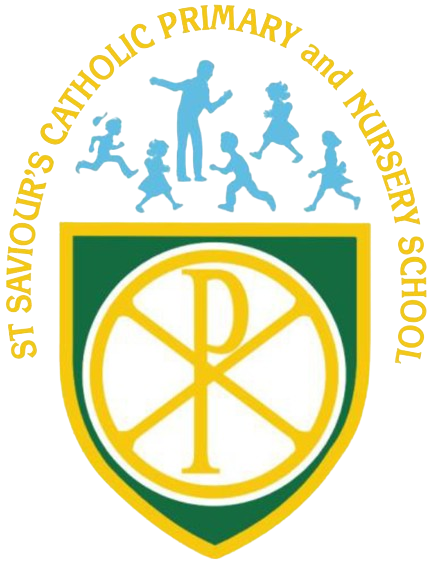RE Statement of Justification 2022
Statement of Justification regarding Religious Education
Rationale
St Saviour’s is a school community where people are ‘committed to lifelong learning rooted in the Catholic Faith’. As our policy states, Religious Education helps children to reflect on the ultimate questions of life, seeking to help pupils to integrate life’s experiences and learning (not just their formal R.E. lessons) into a growing appreciation of Faith in Jesus Christ, rooted in the Gospel and encouraging a Christian way of life.
The Bishops’ Conference of England and Wales has stated that 10% of curriculum time in a Catholic Primary school should be devoted to Religious Education. The staff and Governors of St Saviour’s fully support this, recognising the significant role that we can play in the development of each child’s Faith journey, and the intention of this document is to expound and justify precisely how we attribute this 10% of time to Religious Education.
Time Allocation
If we consider the current hours/week for each key stage we can establish approximately how much actual time is to be allocated (direct teaching time less 15min/day for registration):
Key Stage 1 - 24 hrs/wk Therefore 10% for R.E. - 2hrs 24mins
Key Stage 2 - 25 hrs/wk Therefore 10% for R.E. - 2hrs 30mins
As well as this, our children will develop their knowledge and understanding of the Catholic faith through a range of assemblies, class collective worship, opportunities for personal reflection, special celebrations of Liturgy (Mass, penitential services, Holy Week liturgies… all celebrated at the appropriate time) and sacramental preparation, among others.
Justification for Allocation
The National Board of Religious Inspectors and Advisors in their document ‘Broad areas of Attainment in R.E.’ state that ‘Worship and Religious Education in the classroom constitute the specific, but not exclusive, Religious Education provision’, so recognising the significance of Worship in its variety of forms, but also recognising that RE takes place in other ways too. Furthermore, the Bishops’ Conference for England and Wales state in their Curriculum Directory(2012):
‘ Religious Education is central to the curriculum of the Catholic School and is at the heart of the philosophy of Catholic education.’
and that this religious education
‘should be the key element in an interdisciplinary dialogue'
and that this dialogue
‘underpins, activates, develops and completes the educational and catechetical activity of the whole school. In the context of the Catholic school, RE is part of and completed by other forms of the ministry of the word. Participation in worship and prayer assists understanding of learning, as does engagement with ecclesial life and the outreach of the school in works of charity and justice.’
If we are to achieve this then it is vital that credence is given to the RE teaching that takes place through the areas indicated as well as direct ‘Way, Truth, Life’ teaching. It is by exploring the Gospel message in song, spontaneously referring to our Mission and the Gospel values in dealing with daily life, and presenting situations to reflect upon that children are enabled to “bring clarity to the relationship between faith and life, and between faith and culture.” (Curriculum Directory 2012)
Conclusion
All the methods that we employ in Religious Education are “aimed at opening up” for children, “the mystery of God’s saving action” (Curriculum Directory 2012) and this can, we feel, only be done by a combination of direct syllabus teaching and the flexibility to relate this to our daily lives outside of the RE lesson context. It is for this reason that we are justified in our allocation of 10% of curriculum time to Religious Education whilst also recognising that in addition, it continues to pervade all other aspects of our School Community life.
